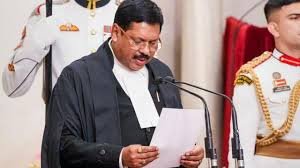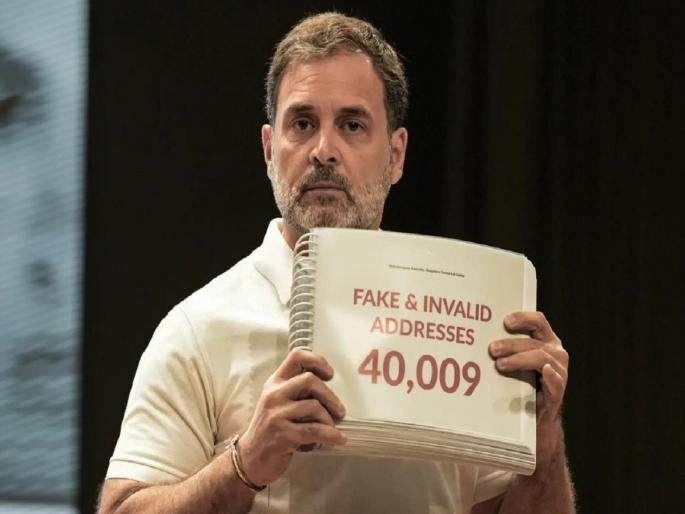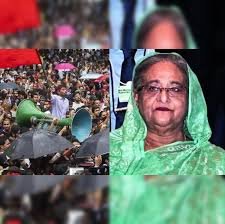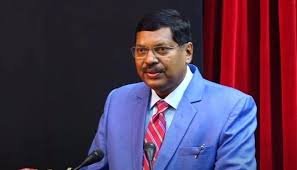
CJI Gavai supports exclusion of 'creamy layer' in reservation for Scheduled Castes; Deny benefits to economically able sections!
Amaravati, November 17, 2025 (Press Release): The Chief Justice of India (CJI) Bhalchandra Ravindra Gavai has strongly supported the idea of ??excluding the 'creamy layer' (economically able sections) from the reservation policy for Scheduled Castes (SC) and Scheduled Tribes (ST). CJI Gavai, who is retiring in a few days, expressed this view at the 'India and 75 years of living Indian Constitution' program organized in Amaravati, Andhra Pradesh. His statement has once again started a discussion on the functioning of the reservation policy, and many experts have expressed the opinion that this is an important step in terms of social justice. CJI Gavai's stance has highlighted the economic inequality in the Dalit community, and he underlined the need for a policy change to ensure that the benefits of reservation are given to the real needy.
Speaking at the event, CJI Gavai said, "The child of an IAS officer and the child of a poor agricultural labourer cannot be the same. The purpose of reservation is to provide social justice, but if it is limited to the economically weaker sections, the real purpose will not be achieved." Referring to the historic 'Indra Sawhney v. Bharat Sangh' case of 1992, he said, "The concept of creamy layer was applied to Other Backward Classes (OBCs), so it must be applied to Scheduled Castes as well. Although I have expressed my opinion on this in my judicial judgment, it was widely criticized. But I still stand by that opinion. Judges generally do not have to justify their decisions, and I still have a week left [until retirement]." This statement became a reason for heated discussions among the audience present.
CJI Gavai's opinion is not just personal, but is linked to his previous judicial decisions. In 2024, he had observed that states should develop a policy to identify the creamy layer among Scheduled Castes and Scheduled Tribes and deny them the benefits of reservation. This statement is based on the basic principles of the reservation policy and is in line with the objective of ensuring social justice under Articles 15 and 16 of the Constitution. His stance has started a new debate to extend the benefits of reservation to the truly disadvantaged sections.
Historical background of reservation policy:
Although the Indian Constitution provides for reservation for Scheduled Castes and Scheduled Tribes, the concept of 'creamy layer' was first applied to OBC reservation in the Indra Sahni case of 1992. The Supreme Court clarified in this decision that economically advanced sections of the backward classes (such as high-ranking officers, big businessmen) should not get the benefit of reservation. This decision is considered to have given real recognition to reservation as a form of social justice. However, this concept has not yet been formally implemented for Scheduled Castes and Scheduled Tribes. According to CJI Gavai, this concept needs to be implemented for SC/STs as well, so that the benefit of reservation reaches poor farmers, laborers and other disadvantaged groups.
In this context, CJI Gavai's statement is an important contribution. He said, "Reservation is for social upliftment, but it should be based on economic inequality. The child of an IAS officer is already well-off, while the child of an agricultural labourer is still struggling. In such a situation, it is not right to share the benefits of reservation equally." These words are not just a judicial point of view, but also identify the social reality. Although the judges, scholars and social activists present at the event welcomed this view, some also expressed doubts about it. However, Dalit organizations are also expressing fears that this idea will endanger the sanctity of reservation.
Policy responsibility on states:
As per CJI Gavai's 2024 observation, state governments will have to formulate laws and policies to identify the creamy layer among SC/STs. For example, there is an annual income limit of Rs 8 lakh for OBCs, similarly, such a limit can be fixed for SC/STs as well. If this policy is implemented, there will be changes in the reservation process in government jobs, scholarships and higher education. The central government has also taken steps in this regard; however, implementation is still pending. According to experts, if these changes are implemented, the benefits of reservation will be available to 70-80 percent of the truly needy, which will strengthen social equality.
Criticism and challenges:
CJI Gavai's opinion has been widely criticized, especially by Dalit and tribal organizations. They say that SC/ST reservation is based on a history of caste discrimination, and imposing economic criteria will defeat the original purpose of reservation. For example, in 2024, the Supreme Court had approved sub-categorization in SC/ST reservation, but there was no clarity on the creamy layer. Now, after the retirement of CJI Gavai, cases may come up on this issue under the leadership of the new Chief Justice Dheeraj Joshi. Social activists say, "Although the concept of creamy layer is correct, if its implementation is not transparent, it will give rise to new controversies."
Future implications:
CJI Gavai's statement has heated up the debate at the national level. In states like Andhra Pradesh, where Dalit and tribal populations are large, this can have a direct impact. The Center
Amaravati, November 17, 2025 (Press Release): The Chief Justice of India (CJI) Bhalchandra Ravindra Gavai has strongly supported the idea of ??excluding the 'creamy layer' (economically able sections) from the reservation policy for Scheduled Castes (SC) and Scheduled Tribes (ST). CJI Gavai, who is retiring in a few days, expressed this view at the 'India and 75 years of living Indian Constitution' program organized in Amaravati, Andhra Pradesh. His statement has once again started a discussion on the functioning of the reservation policy, and many experts have expressed the opinion that this is an important step in terms of social justice. CJI Gavai's stance has highlighted the economic inequality in the Dalit community, and he underlined the need for a policy change to ensure that the benefits of reservation are given to the real needy.
Speaking at the event, CJI Gavai said, "The child of an IAS officer and the child of a poor agricultural labourer cannot be the same. The purpose of reservation is to provide social justice, but if it is limited to the economically weaker sections, the real purpose will not be achieved." Referring to the historic 'Indra Sawhney v. Bharat Sangh' case of 1992, he said, "The concept of creamy layer was applied to Other Backward Classes (OBCs), so it must be applied to Scheduled Castes as well. Although I have expressed my opinion on this in my judicial judgment, it was widely criticized. But I still stand by that opinion. Judges generally do not have to justify their decisions, and I still have a week left [until retirement]." This statement became a reason for heated discussions among the audience present.
CJI Gavai's opinion is not just personal, but is linked to his previous judicial decisions. In 2024, he had observed that states should develop a policy to identify the creamy layer among Scheduled Castes and Scheduled Tribes and deny them the benefits of reservation. This statement is based on the basic principles of the reservation policy and is in line with the objective of ensuring social justice under Articles 15 and 16 of the Constitution. His stance has started a new debate to extend the benefits of reservation to the truly disadvantaged sections.
Historical background of reservation policy:
Although the Indian Constitution provides for reservation for Scheduled Castes and Scheduled Tribes, the concept of 'creamy layer' was first applied to OBC reservation in the Indra Sahni case of 1992. The Supreme Court clarified in this decision that economically advanced sections of the backward classes (such as high-ranking officers, big businessmen) should not get the benefit of reservation. This decision is considered to have given real recognition to reservation as a form of social justice. However, this concept has not yet been formally implemented for Scheduled Castes and Scheduled Tribes. According to CJI Gavai, this concept needs to be implemented for SC/STs as well, so that the benefit of reservation reaches poor farmers, laborers and other disadvantaged groups.
In this context, CJI Gavai's statement is an important contribution. He said, "Reservation is for social upliftment, but it should be based on economic inequality. The child of an IAS officer is already well-off, while the child of an agricultural labourer is still struggling. In such a situation, it is not right to share the benefits of reservation equally." These words are not just a judicial point of view, but also identify the social reality. Although the judges, scholars and social activists present at the event welcomed this view, some also expressed doubts about it. However, Dalit organizations are also expressing fears that this idea will endanger the sanctity of reservation.
Policy responsibility on states:
As per CJI Gavai's 2024 observation, state governments will have to formulate laws and policies to identify the creamy layer among SC/STs. For example, there is an annual income limit of Rs 8 lakh for OBCs, similarly, such a limit can be fixed for SC/STs as well. If this policy is implemented, there will be changes in the reservation process in government jobs, scholarships and higher education. The central government has also taken steps in this regard; however, implementation is still pending. According to experts, if these changes are implemented, the benefits of reservation will be available to 70-80 percent of the truly needy, which will strengthen social equality.
Criticism and challenges:
CJI Gavai's opinion has been widely criticized, especially by Dalit and tribal organizations. They say that SC/ST reservation is based on a history of caste discrimination, and imposing economic criteria will defeat the original purpose of reservation. For example, in 2024, the Supreme Court had approved sub-categorization in SC/ST reservation, but there was no clarity on the creamy layer. Now, after the retirement of CJI Gavai, cases may come up on this issue under the leadership of the new Chief Justice Dheeraj Joshi. Social activists say, "Although the concept of creamy layer is correct, if its implementation is not transparent, it will give rise to new controversies."
Future implications:
CJI Gavai's statement has heated up the debate at the national level. In states like Andhra Pradesh, where Dalit and tribal populations are large, this can have a direct impact. The Center
Speaking at the event, CJI Gavai said, "The child of an IAS officer and the child of a poor agricultural labourer cannot be the same. The purpose of reservation is to provide social justice, but if it is limited to the economically weaker sections, the real purpose will not be achieved." Referring to the historic 'Indra Sawhney v. Bharat Sangh' case of 1992, he said, "The concept of creamy layer was applied to Other Backward Classes (OBCs), so it must be applied to Scheduled Castes as well. Although I have expressed my opinion on this in my judicial judgment, it was widely criticized. But I still stand by that opinion. Judges generally do not have to justify their decisions, and I still have a week left [until retirement]." This statement became a reason for heated discussions among the audience present.
CJI Gavai's opinion is not just personal, but is linked to his previous judicial decisions. In 2024, he had observed that states should develop a policy to identify the creamy layer among Scheduled Castes and Scheduled Tribes and deny them the benefits of reservation. This statement is based on the basic principles of the reservation policy and is in line with the objective of ensuring social justice under Articles 15 and 16 of the Constitution. His stance has started a new debate to extend the benefits of reservation to the truly disadvantaged sections.
Historical background of reservation policy:
Although the Indian Constitution provides for reservation for Scheduled Castes and Scheduled Tribes, the concept of 'creamy layer' was first applied to OBC reservation in the Indra Sahni case of 1992. The Supreme Court clarified in this decision that economically advanced sections of the backward classes (such as high-ranking officers, big businessmen) should not get the benefit of reservation. This decision is considered to have given real recognition to reservation as a form of social justice. However, this concept has not yet been formally implemented for Scheduled Castes and Scheduled Tribes. According to CJI Gavai, this concept needs to be implemented for SC/STs as well, so that the benefit of reservation reaches poor farmers, laborers and other disadvantaged groups.
In this context, CJI Gavai's statement is an important contribution. He said, "Reservation is for social upliftment, but it should be based on economic inequality. The child of an IAS officer is already well-off, while the child of an agricultural labourer is still struggling. In such a situation, it is not right to share the benefits of reservation equally." These words are not just a judicial point of view, but also identify the social reality. Although the judges, scholars and social activists present at the event welcomed this view, some also expressed doubts about it. However, Dalit organizations are also expressing fears that this idea will endanger the sanctity of reservation.
Policy responsibility on states:
As per CJI Gavai's 2024 observation, state governments will have to formulate laws and policies to identify the creamy layer among SC/STs. For example, there is an annual income limit of Rs 8 lakh for OBCs, similarly, such a limit can be fixed for SC/STs as well. If this policy is implemented, there will be changes in the reservation process in government jobs, scholarships and higher education. The central government has also taken steps in this regard; however, implementation is still pending. According to experts, if these changes are implemented, the benefits of reservation will be available to 70-80 percent of the truly needy, which will strengthen social equality.
Criticism and challenges:
CJI Gavai's opinion has been widely criticized, especially by Dalit and tribal organizations. They say that SC/ST reservation is based on a history of caste discrimination, and imposing economic criteria will defeat the original purpose of reservation. For example, in 2024, the Supreme Court had approved sub-categorization in SC/ST reservation, but there was no clarity on the creamy layer. Now, after the retirement of CJI Gavai, cases may come up on this issue under the leadership of the new Chief Justice Dheeraj Joshi. Social activists say, "Although the concept of creamy layer is correct, if its implementation is not transparent, it will give rise to new controversies."
Future implications:
CJI Gavai's statement has heated up the debate at the national level. In states like Andhra Pradesh, where Dalit and tribal populations are large, this can have a direct impact. The Center

.jpg)
















